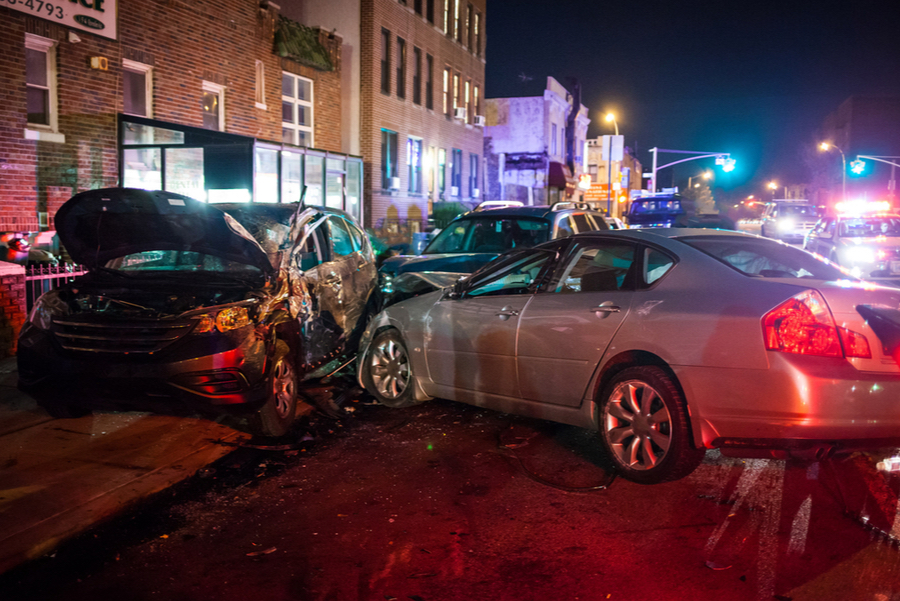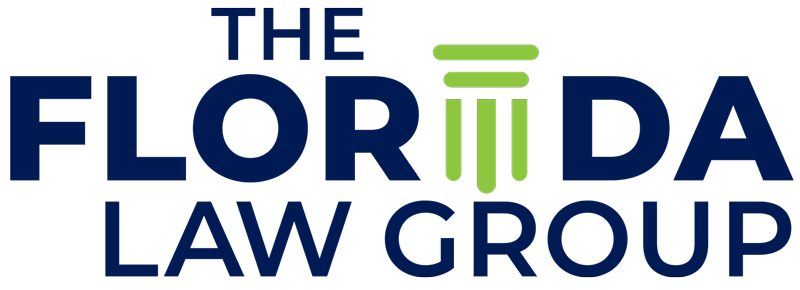Who Is Legally At Fault In A Chain Reaction Car Accident In Florida?

Any car accident can be dangerous or fatal, but when a series of events causes an accident that involves multiple cars or vehicles colliding, the damage will be even more serious. These “chain reaction car accidents”, as they are known as, happen more frequently than you may realize and may cause multiple injuries or fatalities. For other people on the road, these types of pile ups are simply inconvenient, as they often cause the road to be blocked for long periods of time, but chain reaction car accidents can change the lives of the people involved forever.
If you have been injured in a chain reaction car accident in Florida, you have the legal right to make a claim for compensation, but it can be difficult to understand who exactly carries the liability (who is “at fault’) in this situation and where to turn to seek financial damages. In this blog, we’ll discuss how to determine fault, but every injured accident victim needs quality representation from experienced car accident attorneys in order to ensure that they are compensated fairly by insurance companies. The Florida Law Group is ranked in the top 1% of law firms nationwide; we have recovered over $1 billion dollars for accident victims in Florida, including Florida chain reaction car accident victims, and we know what it takes to make a solid claim for maximum compensation! You can call any of our Florida offices to set up a free consultation and discuss your legal options.
Examples of Chain Reaction Car Accidents In Florida
Already in 2021, there have been multiple reports of Florida chain reaction car accidents.
In February, two police officers were stopped in the road after finishing a traffic stop in Pembroke Pines when one of the marked vehicles with its emergency lights on was hit by a driver. Both officers suffered “minor injuries” from flying debris, but the driver of the other car had to be cut out along with her passenger and transported to the hospital.
Also in February, a chain reaction crash involving seven vehicles in Pompano Beach resulted in the death of a 71-year-old woman.
In March, one car rear-ended another in Deerfield Beach. When the drivers got out to view the damage, one did not turn on their hazard lights, and another car approaching from behind hit the parked car, causing both drivers to fall on the road. This crash resulted in 1 fatality and “minor injuries” for the other two drivers.
In April, a group of drag racers and reckless drivers doing donuts on the Palmetto Expressway caused a crash involving 10 cars. The incident resulted in “minor” injuries.
Also in April, on the Courtney Campbell Highway in Tampa, Florida, a tractor-trailer driver could not brake for stopped traffic in time, causing an eight-vehicle collision that resulted in 2 people being sent to the hospital.
And it’s only May. Florida chain reaction car accidents can easily happen to anyone, which is why it is important to do your research and know what to expect in case you are involved and injured in this type of accident. The immediate action steps are the same for every vehicle accident – call the police to report the accident, exchange insurance information (with every driver involved) and take pictures of the scene (if you are able to), and get an immediate medical examination even if you do not feel injured, because adrenaline could be preventing you from realizing if you are hurt. However, there are unique nuances associated with a chain reaction car accident, such as fault.
When There Are Multiple Vehicles/Injuries, Who Pays?
The initial collision is usually what causes chain reactions – for example, one car rear-ends another, causing that car to crash into the one in front of it, or someone else on the road to swerve. Usually, the driver who caused the initial collision will be liable for all injuries and damage stemming from the accident; however, Florida law requires that drivers keep a safe following distance between them and the car in front of them, so if a car was too close to the car in front of it and was unable to stop in time, they may also be at fault for the accident.
Consider this scenario: Driver A is stopped at a red light, with Driver B behind them. Driver C is texting and not paying attention, and rear-ends Driver B with tremendous force, pushing Driver B’s car into Driver A’s car. In this case, Driver C would be responsible (or more accurately, Driver C’s insurance company would be responsible) for any damages suffered by Driver B and Driver A, because Driver A would never have been hit if it weren’t for Driver C’s reckless actions.
However, let’s say that Driver A is going 50 mph down the road; Driver B is following too closely, and so is Driver C. A deer jumps in front of Driver A, forcing them to brake suddenly. Driver B does not have time to stop, and neither does Driver C, although they may have if they had been following safe driving practices, and they all crash into each other in sequence (Driver B hits Driver A’s car and Driver C hits Driver B’s car). In this scenario, both Driver B and Driver C (their insurance companies) would be responsible for Driver’s A’s injuries/damage, because they both caused separate impacts, and Driver C would also be responsible for Driver B’s injuries/damage, because had they been following at a safe distance, they would have not hit Driver B.
These examples are only using 3 cars; you can imagine how complicated proving and assigning fault could be when there are 4, 5, 6, 7, or more vehicles involved.
Now, Florida is a no-fault state, which means that injured accident victims are required to go through their own insurance companies first and use up their personal injury protection coverage (PIP, which is $10,000) before seeking compensation from another source in a Florida chain reaction car accident. For some extremely minor accidents, $10,000 may be able to cover the cost of medical exams and property repair, but for multi-car pile ups, fault will definitely need to be determined in order for the injured accident victims to seek the full damages they deserve from the responsible driver’s insurance company.
If you were injured in a Florida chain reaction car accident, you need to work with a lawyer who will enlist crash reconstructionist, forensic experts, and other sources to prove what really happened and fight for the maximum compensation that your injuries deserve. Even if it is obvious what happened (which is rarely true in these types of accidents), insurance companies may attempt to devalue or deny your claim because doing so protects their bottom line. We aggressively advocate for what’s fair, and you never have to pay us unless we win your case. Call now!


